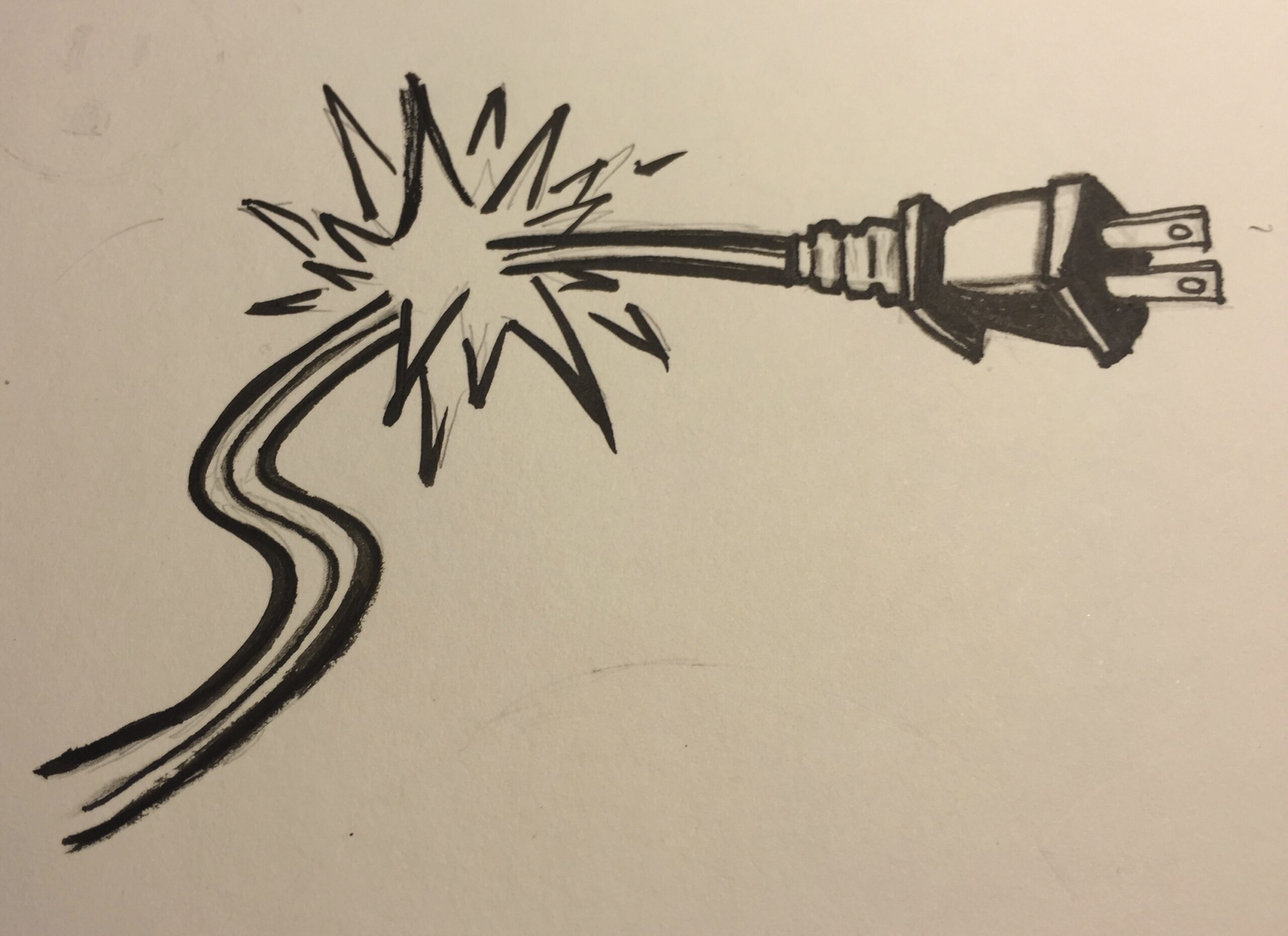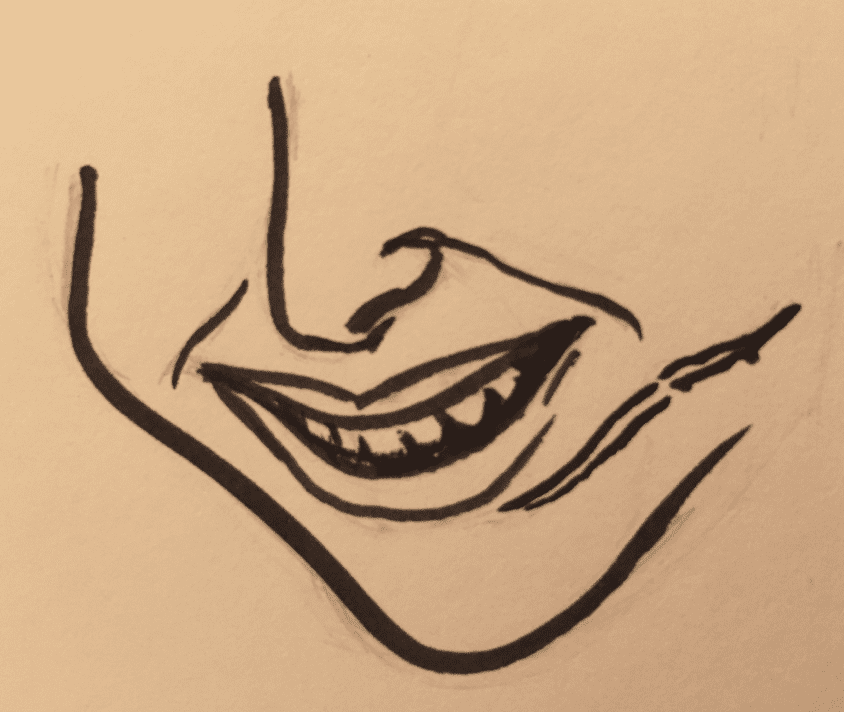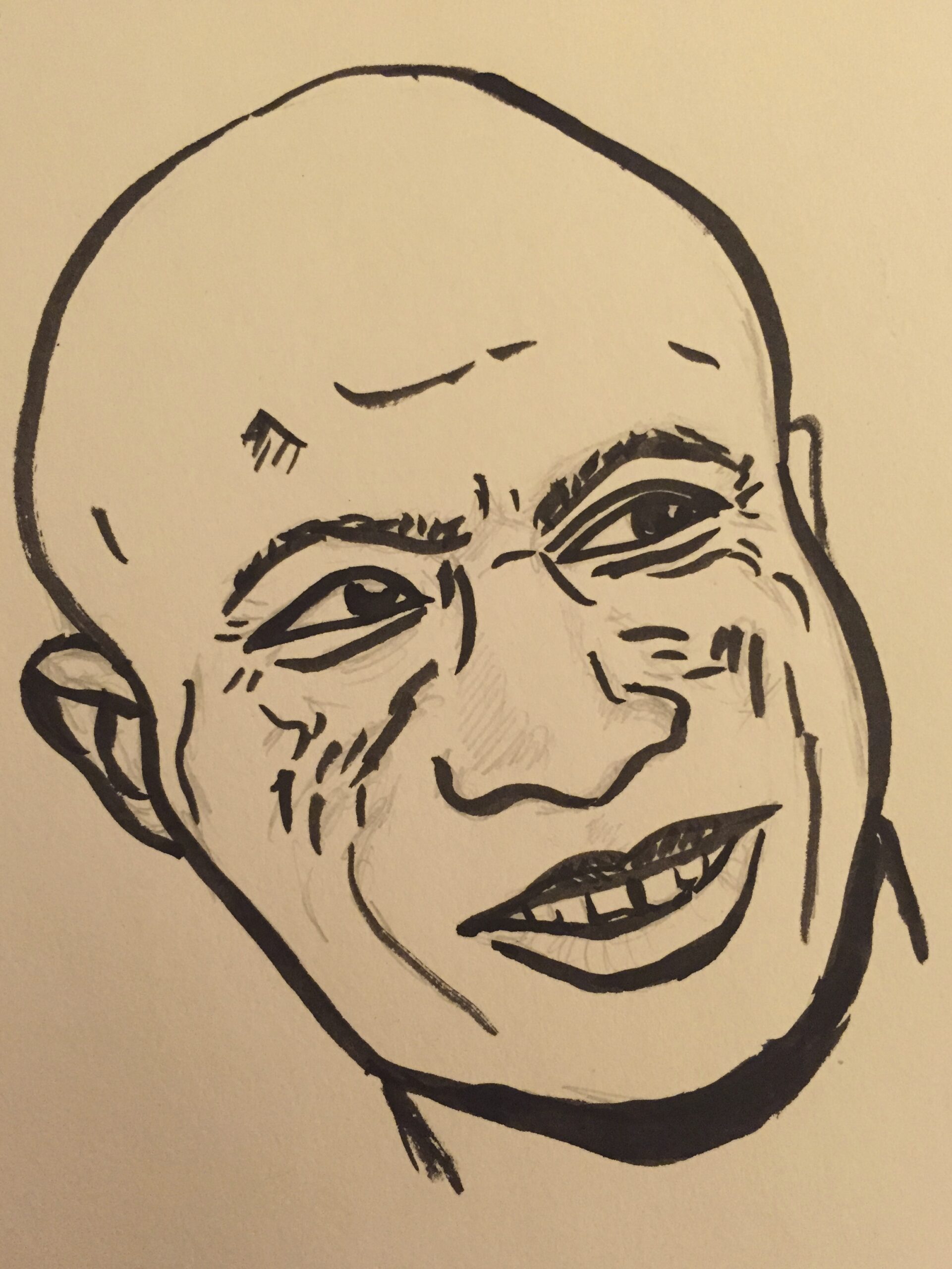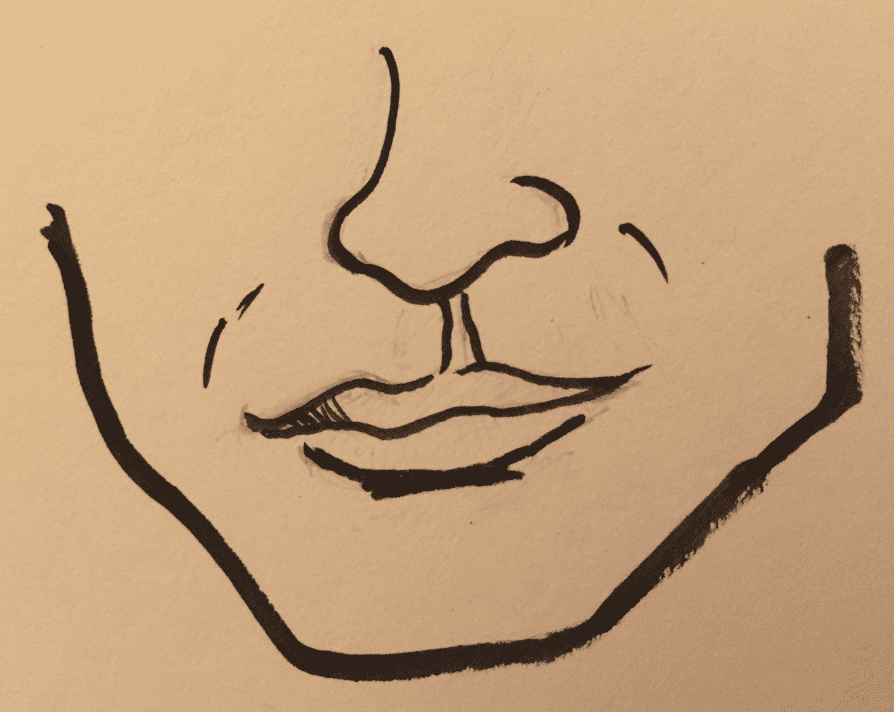I have wanted to be perfect; I have hated perfection. I have wanted to be beautiful; I have wanted to be flawed. I like scars, blemishes, large pores, and moles. I like shiny hair, lipstick, and bronzers.
In flaws, there’s always a story. Mine is twofold.
I have a small scar below my bottom left lip. I’ve had it since I was two. I’ve loved and hated it at once during different times of my life. But mostly, I’ve come to see it as a flaw that’s multifold.
At two, like most babies, I put everything in my mouth. While my parents were at work, and I was home with my sisters and great grandma, I bit into the electrical cord of a fan plugged into the wall. I don’t remember this, but I am told that my body shook uncontrollably and white foam spilled from my mouth. I don’t know how she knew to do it, but my sister Heather, who was five years old at the time, ripped the cord from the wall, saving my life.
My mom said she cried when she saw my mouth; it looked swollen, badly bruised, and misshapen. There was also a mark on the bottom of my foot where the electricity had coursed through.
After surgery my mom said the scar was barely visible; it looked like a strand of hair. My parents were relieved, joyful. I had not only escaped death, but also having to live with an “ugly scar” on my face. The doctor’s orders were for me to not have any solids for a few days after and definitely not to suck from a bottle until it was fully healed. My parents hid the bottles; I cried and threw tantrums. Eventually somehow, I found one and began sucking madly, busting open the stitches and reopening the scar. My mom screamed when she saw me. She took me back to the doctor, who then told her it was probably best for me to wait to have another surgery until I was older, through puberty, when most of the stretching and growing was done.
Kids teased me. They stared, called it “weird,” or “ugly.” I became self-conscious and afraid to talk. I didn’t want to draw attention to my mouth. My parents and siblings often remarked that they didn’t even notice it; they could barely see it. But this was also troubling for me because what was inherent in these good intentions was the notion that a scar is a flaw; a flaw isn’t beautiful.
*
By high school, I liked it. It was cool. I decided I didn’t need the surgery. My scar became part of me; people began to see it as interesting and at times, I liked to rub my finger over it, knowing it was there; this tough sliver of skin began to partially define me: it made me feel amazing in some sort of weird way. I was unusual. I imagined I was a scarred superhero.
I crushed and obsessed over celebrities with scars or cleft pallets, like Joaquin Phoenix and Tina Fey. I lost myself in Joaquin’s mouth, the way his top lip curled upwards, and that beautiful jagged line between his nose and mouth.
Once when I worked at a retirement community at fifteen, the cook said to me: “You’re so cute with that scar. It reminds me of that actor with that cleft pallet.”
At bars, some men have tried to hit on me, saying something like, “I just love your scar. I can’t stop staring at it.” I knew what they were up to: I mean, how could I turn down a man who loved my worst attribute? Some nights, this tactic worked.
*
Jennifer Garner has an overlapping pinkie toe. I saw it magnified on a cover of a magazine. In fact, the headline read: JENNIFER GARNER EXPOSES UNSIGHTLY PINKIE TOE.
Or a recent title of an article: “Ten Famous Women Who Are Aging Horribly.”
Or the Internet attack on Renee Zellweger’s appearance.
*
Consider the Japanese tradition: “wabi-sabi,” a design aesthetic that seeks beauty in imperfection. In this tradition, the broken objects are mended by filling the cracks and dents or chips in with gold. Wabi-sabi embodies a worldview centered on accepting “transience and imperfection.” This aesthetic is sometimes described as beauty that is “imperfect, impermanent, and incomplete.” It’s derived from the Buddhist teaching of the three marks of existence: impermanence, suffering and emptiness or absence of self-nature.
I imagine filling my scar with gold. Or filling wrinkles with silver. I imagine an aged face as a mosaic of lines of color; all the laugh lines and marks of grief and time sparkling and shimmering, celebrated as beautiful, as human.
*
A study published in 2009 in the journal Personality and Individual Differences revealed: Researchers altered the images of eight men and eight women. One version would show a facial scar, and one would not. Researchers then presented these pictures to opposite-sex participants. Participants had to assess the attractiveness of the portrayed individuals as short term or long-term potential partners using a 1 to 7 scale. Unsurprisingly, women rated men with minor facial scars more attractive, however, only in the short-term realm. In the long term, women didn’t think scarred men would be better “marriage material.” Interestingly, men’s ratings of women weren’t affected by the scarring manipulation (both for short and long term prospects). Men’s scars were more likely to be seen as the result of violent causes and men with facial scars are deemed to be edgy, embodying the “bad boy” appeal. A good friend of mine has a jagged facial scar, and he says people seem disappointed in the story of how he got it—a bicycle accident. People want it to be more violent.
*
Tina Fey, on the other hand, has quite a story: A stranger slashed her face when she was playing in her front yard when she was five. For many years, she didn’t discuss the scar because she said she didn’t want to “exploit it,” but in her book, Bossypants, she wrote:
What should have shut me down and made me feel ‘less than’ ended up giving me an inflated sense of self. It wasn’t until years later, maybe not until I was writing this book, that I realized people weren’t making a fuss over me because I was some incredible beauty or genius; they were making a fuss over me to compensate for my being slashed. I accepted all the attention at face and proceeded through life as if I really were extraordinary.
And extraordinary she is. I can’t imagine her without the scar, just like it’s been hard to imagine myself without mine. It gave me an unexpected source of power: I was unusual, and I had defied death.
*
I could tell you how this really begins with the left side of my mouth starting to droop, and how the scar tissue had gotten painful or how awful it is to go to the dentist and they have to stretch my mouth in unimaginable ways. I don’t want sympathy but I want you to know why I decided to have surgery.
It hurt. It began to burn.
After talking with the surgeon, he said I had muscle damage, which needed to be repaired or the scar would continue constricting my mouth, making it difficult to open in time. He said the surgery would be easy, repairing the muscle damage and closing up the scar. At I asked what he meant by “closing it up.” He told me in a rather apologetic way, “It won’t ever be perfect, but it’ll look better.”
I postponed the surgery until Christmas break, which gave me a few months to back out if I wanted to.
*
I had nightmares the week before surgery. In one, doctors sealed my mouth shut. In another, the surgeons grabbed the wrong tool, which looked like some sort of tiny, rusted saw, and ripped off the left side of my face.
My surgery was scheduled for 8 a.m. on a Monday. At intake, the nurses looked at my paperwork and read aloud, “scar excision.” They asked, “Where?” When I showed them, they said it was a bragging right. One said it reminded her of Tina Fey.
*
In the car ride home, I was woozy and drugged. I felt nauseous, and all I wanted to do was get into bed. My mouth hurt so badly I could barely open it. I couldn’t speak. When my daughter saw me, she said, “It’s still beautiful, Mom.” My five-year-old son told me it looked like I had been in a boxing fight. He seemed proud.
***
Rumpus original art by Sylvia Nguyen.








